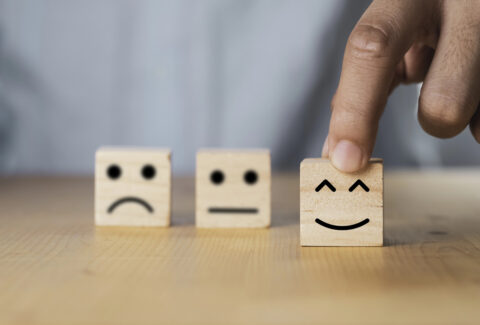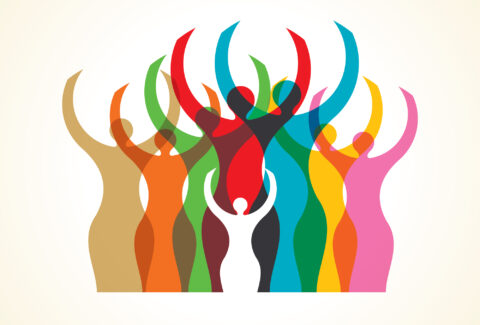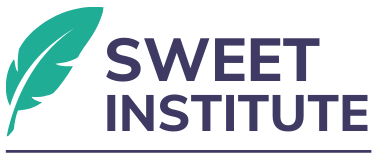The Internal Quality World and Reality Therapy: A Blueprint for Meaningful Living
In the framework of Choice Theory and Reality Therapy[1], developed by Dr. William Glasser, one of the most profound and transformative concepts is that of the “Quality World.” This internal mental space serves as the blueprint for what we most value, our ideal reality. It is the unique, deeply personal set of people, experiences, values, goals, beliefs, and possessions that we believe will satisfy our five basic psychological needs: survival, love and belonging, power, freedom, and fun.
Understanding the Quality World is central to effective Reality Therapy[2], as it offers a lens through which clients can explore their motivations, evaluate their behaviors, and make better choices for greater fulfillment. This article explores the nature of the Quality World, how it’s formed, and how it informs the therapeutic process.
What Is the Quality World?
The Quality World is our inner, idealized map of reality, a mental photo album of everything and everyone that we believe can help us meet our needs.[3] It is entirely subjective, meaning no two people have the same Quality World. While external circumstances may be shared (family, workplace, society), our internal representations of what matters and why are unique to us.
The Quality World includes:
- People: loved ones, mentors, friends, role models
- Experiences: moments of joy, connection, mastery, or freedom
- Beliefs/Values: justice, spirituality, kindness, achievement
- Objects/Places: a dream home, a favorite café, a meaningful book
- Aspirations: dreams of who we want to become
Importantly, everything in the Quality World represents a pathway to need fulfillment. If something is in our Quality World, it’s because we believe it helps us survive, feel loved, feel competent, feel free, or feel joy.
Formation of the Quality World
Our Quality World is shaped throughout our lives by:
- Early experiences
- Cultural influences
- Attachment patterns
- Personal triumphs and traumas
- Role models and formative relationships
New items can be added, existing ones can evolve, and some may no longer serve us. But the core function remains the same: to guide our behavior in a direction that aligns with our internal vision of a fulfilling life.
The Quality World and the Real World: A Source of Conflict
Problems often arise when there is a significant mismatch between our internal Quality World[4] and the reality we are living in. For example:
- A person values deep connection but is in a series of shallow or toxic relationships.
- A young adult dreams of being a musician but works a job that stifles creativity.
- A client values freedom but feels trapped in their daily routine.
This discrepancy creates psychological tension, frustration, and distress. In Reality Therapy, identifying and working through this gap becomes a central focus of the healing process.
Reality Therapy: Working with the Quality World
Therapists using Reality Therapy don’t aim to dismantle the Quality World—but rather to clarify it, explore it, and support the client in creating a life that aligns with it. Here’s how:
- Helping Clients Clarify Their Quality World: Many individuals are unaware of what’s in their Quality World.[5] Therapy helps bring it into conscious awareness through questions like:
- Who are the most important people in your life?
- What are the experiences you long for?
- What do you believe will make your life feel meaningful or complete?
- What do you spend most of your time thinking or dreaming about?
This process deepens self-awareness and reveals what matters most to the individual.
- Exploring Discrepancies Between the Quality World and Reality: Reality Therapy helps clients examine where they are out of alignment:
- “You value closeness, but you’re avoiding intimacy—why might that be?”
- “You want to feel capable, but your job isn’t allowing you to grow.”
- “You dream of travel and freedom, yet you’re feeling stuck and resentful.”
This gap becomes the starting point for intentional change.
- Using the WDEP System to Bridge the Gap: The WDEP system (Wants, Doing, Evaluation, Planning)[6] offers a structured approach:
- Wants: Is what you want now still in your Quality World?
- Doing: What are you doing to get what you want?
- Evaluation: Is it working?
- Planning: What can you do differently to bring your life closer to your ideal?
This empowers clients to take responsibility and design a plan of action.
- Re-Evaluating the Quality World When Needed: Sometimes, a person’s Quality World may contain outdated, idealized, or even harmful elements:
- A toxic partner they still idolize
- A career goal no longer aligned with their values
- A belief that “I must be perfect to be loved”
Reality Therapy encourages gentle, nonjudgmental reflection:
- “Is this still working for you?”
- “Was this placed there by you—or by someone else?”
- “What might you replace this with that better serves your growth?”
Why the Quality World Matters
When individuals begin aligning their behaviors with what truly matters to them, they report:
- Greater emotional clarity and purpose
- More effective and meaningful goal setting
- Improved relationships and communication
- Decreased distress and internal conflict
The Quality World serves as an internal compass. When respected, clarified, and used well, it becomes a source of motivation, direction, and fulfillment.
Case Example: Reclaiming the Quality World
Marcus, a 40-year-old teacher, came to therapy feeling overwhelmed and numb. Through Reality Therapy, he identified his Quality World included: deep conversations, creative expression, outdoor adventure, and being a present father. Yet his current life involved none of these. He was isolated, overworked, and had little time with his kids.
Through weekly work:
- He scheduled “Dad time” into his week.
- He started a poetry journal to reconnect with his creative side.
- He planned a monthly hiking trip with a close friend.
Within months, Marcus reported more joy, connection, and clarity—because he was living in alignment with his Quality World.
Conclusion: Living from the Inside Out
The Quality World is not a fantasy—it’s a psychological map of what matters most. When understood and honored, it offers a foundation for lasting change. In the hands of a skilled Reality Therapist, it becomes a compass pointing toward wholeness, freedom, and fulfillment.
In a world that often pushes people to conform or disconnect from their inner truth, the principles of Reality Therapy remind us:
The life you long for is not outside of you. It’s already within—waiting to be lived.
Join us for our 8-Week Certificate Course on Reality Therapy!
🗓 Date: Wednesday, May 7, 2025
⏰ Time: 7:00 PM – 9:00 PM Eastern Time
📍 Location: Online
[1] Wubbolding, Robert E. Reality therapy for the 21st century. Routledge, 2013.
[2] Wubbolding, Robert E. “The voice of William Glasser: Accessing the continuing evolution of reality therapy.” Journal of Mental Health Counseling 37.3 (2015): 189-205.
[3] Wubbolding, R. “Reality therapy.” Contemporary theory and practice in counseling and psychotherapy (2016): 173-200.
[4] Hillis, Patrick M. “Suggesting The Quality World Through Student Performance Outcomes.” International Journal of Reality Therapy 29.1 (2009).
[5] Lojk, Bosiljka. “FORMULATION IN REALITY THERAPY: MAKING SENSE OF CLIENT’S PROBLEMS.” International Journal of Choice Theory and Reality Therapy 37.2 (2018): 86-96.
[6] Wubbolding, Robert E., Willa J. Casstevens, and Michael H. Fulkerson. “Using the WDEP system of Reality Therapy to support person‐centered treatment planning.” Journal of Counseling & Development 95.4 (2017): 472-477.







